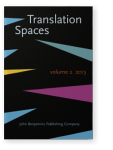Vol. 2 (2013) ► pp.125–149
Understanding the economics of machine translation
In recent years, machine translation (MT) has begun to take its place alongside translation memory, terminology management and workflow automation as a key tool in large-scale professional translation projects. Nevertheless, misconceptions abound about the ways in which MT affects the professional translation work process. Effective, efficient and appropriate use of MT in professional translation production is a complex affair that requires an awareness and understanding of the factors that shape the success of MT deployments in terms of both systems development and return on investment (ROI). Generally speaking, however, these factors are not well understood by translation buyers, translation agencies or professional translators. This article provides an overview of the factors that shape successful commercial MT use and addresses some common misperceptions surrounding MT in professional translation projects.
Cited by (5)
Cited by 5 other publications
This list is based on CrossRef data as of 19 july 2024. Please note that it may not be complete. Sources presented here have been supplied by the respective publishers. Any errors therein should be reported to them.
